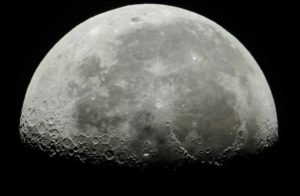NASA unveils schedule for ‘Artemis’ 2024 Mission
The National Aeronautics and Space Administration (NASA) of United States (US) has unveiled the calendar for its forthcoming “Artemis” program.
Key Highlights
- Artemis Program: The mission will return astronauts to Moon for first time in past 50 years, including eight scheduled launches and a mini-station in lunar orbit by 2024.
- The schedule for Artemis Programme is as follows:
- Artemis 1: It is planned for 2020. It will be an uncrewed flight test mission around Moon. It will demonstrate NASA’s capability of sending crew spaceship to lunar orbit ahead of its return to surface of Moon.
- After Artemis 1, NASA is also targeting 2020 for launch of its powerful Space Launch System (SLS, rocket that will do the job) and Orion spacecraft (which will carry astronauts) together for the first time from a modernized Kennedy Space Center in Florida, US. The SLS will also deploy a number of CubeSats to perform experiments and technology demonstrations.
- Artemis 2: is the next mission planned for 2022. It will orbit Earth’s satellite (moon) and will fly a different path than first test flight. It will be a crewed mission and around Moon for first time in 50 years.
- Artemis 3: will follow Artemis 2. This is the ‘Artemis’ 2024 Moon mission which will return astronauts to lunar surface by year 2024, including first woman and the next man. So far only 12 humans (all American male) have walked on Moon.
- All three missions will be launched into space by biggest rocket of all time, the Boeing-led Space Launch System (SLS). It is currently under development but has seen numerous delays and is being criticized by some as a bloated jobs program.
About Lunar Gateway
- NASA and its fellow partners are designing and developing, a small spaceship in orbit around Moon for astronauts and science and technology (S&T) demonstrations, it is known as ‘The Lunar Gateway’. It is located about 250,000 miles from Earth.
- The Gateway will enable access to entire surface of Moon and will provide new opportunities in deep space for exploration. It’s also a stop-over for missions to Mars.
About Artemis Mission
- ARTEMIS is abbreviation for Acceleration, Reconnection, Turbulence and Electrodynamics of Moon’s Interaction with the Sun. It is NASA’s next mission to Moon.
- It is named Artemis after Greek mythological Goddess of Moon and also twin sister to Apollo (the namesake of Apollo program which sent 12 American astronauts to Moon between 1969 and 1972).
- Objective: It consists of a spacecraft to measure what happens when Sun’s radiation hits our rocky moon, where there is no magnetic field to protect it.
- Benefits: Artemis mission uses two out of five in-orbit spacecraft from another NASA Heliophysics constellation of satellites called The Time History of Events and Macroscale Interactions during Substorms i.e. “THEMIS”. The NASA’s THEMIS mission began in 2007 and was successfully completed in 2010. The Artemis mission thus allows NASA to repurpose its two in-orbit spacecraft and to extend their useful science mission, saving millions of taxpayer dollars instead of building and launching new spacecraft.
- Significance: After a successful Artemis mission, NASA will be able to establish a sustainable human presence on Moon by 2028 which will further help it to uncover new scientific discoveries, demonstrate new technological advancements, and lay foundation for private companies to build a lunar economy.
Month: Current Affairs - May, 2019


